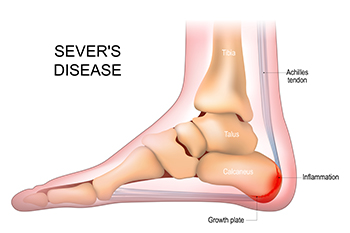
Sever's disease, medically known as calcaneal apophysitis, is a condition that affects children and adolescents, particularly those who are active in sports. This condition involves inflammation of the growth plate in the heel, which is a cartilage area where the heel bone and tendons attach. Risk factors include activities that put repetitive stress on the heel, such as running or jumping, as well as being overweight. Symptoms often result in heel pain, which may worsen with physical activity. If your active child has heel pain, it is suggested that you visit a podiatrist who can recommend specific stretches for relief and guide you toward appropriate treatment methods.
Sever's disease often occurs in children and teens. If your child is experiencing foot or ankle pain, see Theresa Brown, DPM from Essie M.B. Smith Foot Clinic. Our doctor can treat your child’s foot and ankle needs.
Sever’s Disease
Sever’s disease is also known as calcaneal apophysitis, which is a medical condition that causes heel pain I none or both feet. The disease is known to affect children between the ages of 8 and 14.
Sever’s disease occurs when part of the child’s heel known as the growth plate (calcaneal epiphysis) is attached to the Achilles tendon. This area can suffer injury when the muscles and tendons of the growing foot do not keep pace with bone growth. Therefore, the constant pain which one experiences at the back of the heel will make the child unable to put any weight on the heel. The child is then forced to walk on their toes.
Symptoms
Acute pain – Pain associated with Sever’s disease is usually felt in the heel when the child engages in physical activity such as walking, jumping and or running.
Highly active – Children who are very active are among the most susceptible in experiencing Sever’s disease, because of the stress and tension placed on their feet.
If you have any questions, please feel free to contact our office located in Montgomery, AL . We offer the newest diagnostic and treatment technologies for all your foot and ankle injuries.



